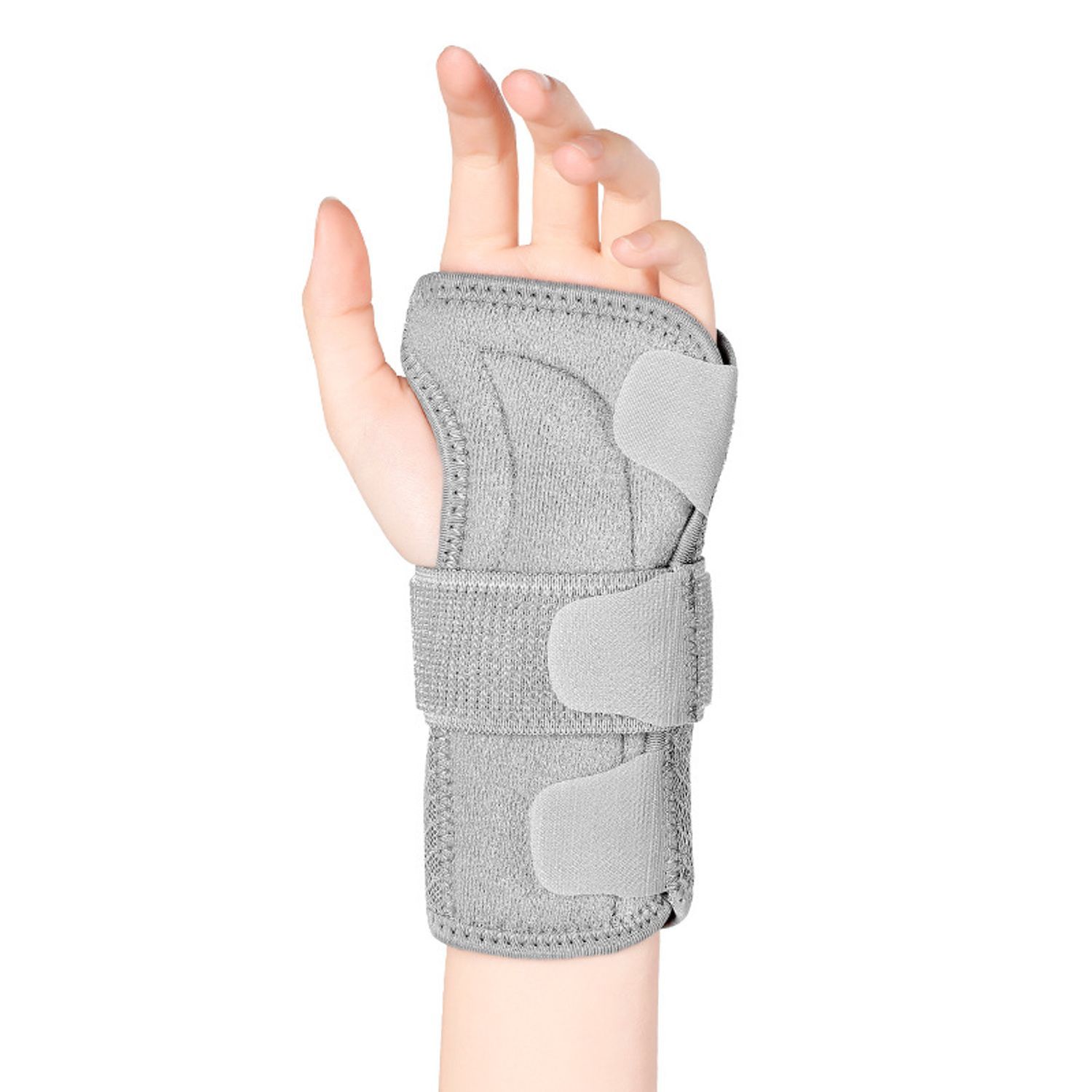john@lee-mat.com
+86-13510662576

GET QUOTE
Do Wrist Supports Really Help?
Wrist injuries and discomfort can be a significant hindrance to daily activities and overall quality of life. Whether you're dealing with repetitive strain from typing or recovering from an injury, wrist supports are often recommended to provide relief and stability. But do they really work? In this article, we'll explore the effectiveness of wrist supports, including orthopedic wrist supports and braces, and how they compare to other support gear like the waist protection belt and waist support brace.
The Role of Wrist Supports in Injury Prevention
Wrist supports, including orthopedic wrist supports and braces, are designed to stabilize the wrist joint, reduce strain, and prevent injuries. Just as a waist protection belt supports the lower back, wrist supports offer targeted support to a vulnerable area, helping to prevent conditions like carpal tunnel syndrome, tendonitis, and sprains.
How Wrist Supports Work
Wrist supports function by:
- Stabilizing the Joint: They limit the range of motion, preventing excessive movement that can lead to injury.
- Providing Compression: Compression helps reduce inflammation, swelling, and pain, promoting faster healing.
- Enhancing Proprioception: Wearing a wrist support increases awareness of wrist positioning, leading to better movement patterns and reduced strain.
Comparing Wrist Supports and Waist Support Braces
While wrist supports are essential for maintaining wrist health, the waist support brace plays a similar role in protecting the lower back. Both types of support gear are designed to prevent injuries by providing stability and reducing strain on specific body parts.
The Benefits of Waist Support Braces
A waist support brace is crucial for individuals who engage in activities that put a strain on the lower back, such as heavy lifting or prolonged sitting. These braces help maintain proper posture, reduce the risk of injury, and alleviate back pain.
- Prevents Overextension: Just as wrist supports prevent excessive wrist movement, waist protection belts prevent the lower back from overextending, reducing the risk of strain.
- Supports Core Muscles: A waist support brace provides additional support to the core muscles, which are essential for maintaining stability and reducing the risk of injury.
Orthopedic Wrist Supports & Braces: A Closer Look
Orthopedic wrist supports and braces are designed to provide targeted support for individuals recovering from wrist injuries or managing chronic conditions like arthritis. These supports are often recommended by healthcare professionals as part of a comprehensive treatment plan.
Types of Orthopedic Wrist Supports
- Rigid Wrist Braces: These braces are designed to immobilize the wrist, providing maximum support for severe injuries or post-surgery recovery. They prevent any movement that could exacerbate the injury.
- Flexible Wrist Supports: These supports offer a balance between stability and flexibility, allowing for some movement while still providing compression and support.
- Compression Sleeves: These sleeves provide mild support and are ideal for individuals with mild discomfort or those looking to prevent injuries during activities.
When to Use Orthopedic Wrist Supports
Orthopedic wrist supports are particularly beneficial in the following situations:
- Post-Injury Recovery: After a wrist injury, wearing a support can help stabilize the joint and prevent further damage while the wrist heals.
- Chronic Conditions: For individuals with conditions like arthritis or carpal tunnel syndrome, wearing a wrist support can alleviate pain and reduce strain during daily activities.
- Prevention: Even if you haven’t experienced a wrist injury, using a support during activities that put a strain on the wrist, such as typing or lifting, can help prevent injuries.
Choosing Between Wrist Supports and Waist Support Braces
When deciding whether to use a wrist support or a waist protection belt, it's essential to consider the specific needs of your body and the activities you engage in. While both types of support gear are valuable, their applications differ based on the area of the body that requires protection.
Factors to Consider
- Type of Activity: If your activities involve repetitive hand movements or weight-bearing on the wrists, a wrist support is more appropriate. Conversely, if your activities strain the lower back, such as lifting or prolonged sitting, a waist support brace would be more beneficial.
- Existing Conditions: If you have a history of wrist or back problems, prioritize the support gear that addresses the specific area of concern.
- Comfort and Fit: Both wrist supports and waist protection belts should fit comfortably without restricting movement or causing discomfort.
How to Choose Between a Wrist Support and a Waist Support Brace
Understanding your specific needs is key to selecting the right support gear. Whether you need to protect your wrist from repetitive strain or provide extra support to your lower back, choosing the right product will ensure you get the maximum benefit.
Frequently Asked Questions About Wrist Supports
1. Can Wrist Supports Be Worn All Day?
While wrist supports can be worn for extended periods, it’s essential to give your wrist breaks to avoid muscle dependency. Use the support during activities that strain the wrist, but remove it during rest periods to allow your wrist to move freely.
2. Do Waist Support Braces Help with Lower Back Pain?
Yes, waist support braces are highly effective in alleviating lower back pain by providing stability and supporting proper posture. However, they should be used in conjunction with exercises that strengthen the core muscles.
3. What Are the Side Effects of Using Wrist or Waist Supports?
Over-reliance on supports can lead to weakened muscles, as the body may become dependent on the external support. It’s crucial to use these devices as a supplementary aid while continuing to strengthen the targeted areas through exercise.
4. How Tight Should a Waist Support Brace Be?
A waist support brace should be snug but not restrictive. It should provide support without causing discomfort or restricting breathing.
Conclusion: The Value of Support Gear
Wrist supports, such as orthopedic wrist braces, are essential tools for preventing injuries and managing wrist-related conditions. Whether you’re recovering from an injury, managing chronic pain, or engaging in activities that put strain on your wrists, the right support can make a significant difference in your comfort and mobility. Similarly, waist protection belts and waist support braces offer critical support for your lower back, ensuring that you can perform strenuous tasks without risking injury.
At Lee-Mat, we specialize in providing high-quality support gear, including wrist braces and waist support belts, designed to meet the needs of individuals across various lifestyles. Our products are crafted with precision to offer maximum comfort, durability, and effectiveness. By choosing Lee-Mat, you're investing in your health and ensuring that you have the best tools to support your body during recovery or daily activities. Trust in Lee-Mat to help you maintain your well-being with our reliable and expertly designed orthopedic supports.


